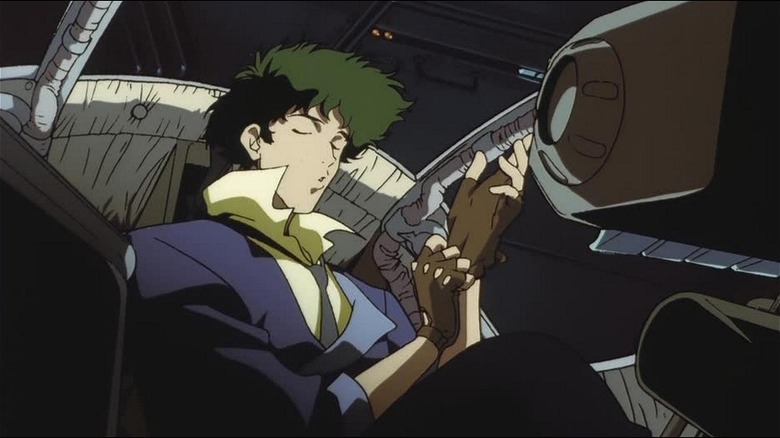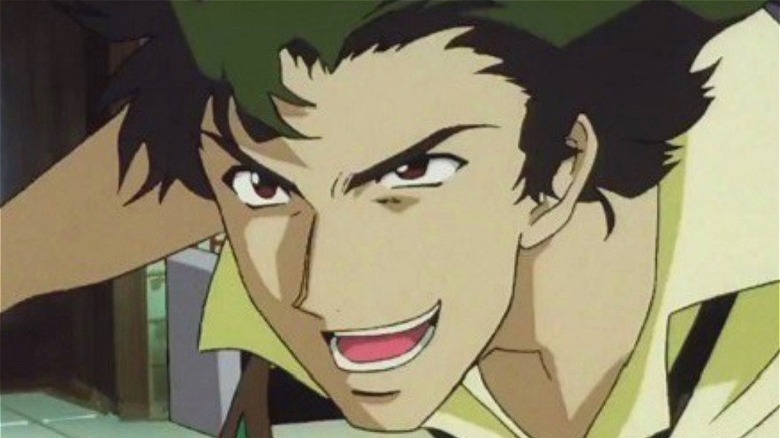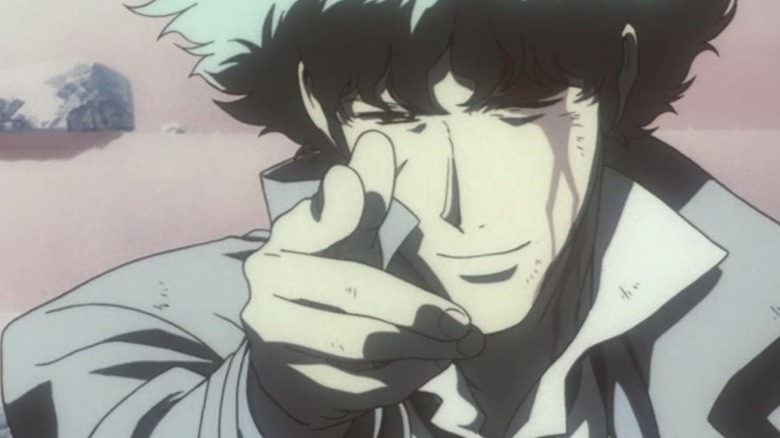Long Before Cowboy Bebop, Shinichirō Watanabe Had Already Created Spike
"I felt like I was watching a dream I could never wake up from. Before I knew it, the dream was over."
These words, spoken by Spike Spiegel in Shinichirō Watanabe's genre-hybrid anime series, "Cowboy Bebop," form the crux of his character. Apart from being one of the primary protagonists of the series, Spike is the heart of "Cowboy Bebop," as his troubled nonchalance reinforces several themes in Watanabe's classic. The green-haired space cowboy undergoes quite the personal journey, in which he is forced to confront his murky past and dance with his own demons. This makes Spike Spiegel an extremely beloved character, and his fate at the end of "Cowboy Bebop" is still a topic of heated discussion for long-time fans of the anime.
But how did Watanabe come up with such a compelling character to begin with? In order to understand this, let's take a quick look at the anime's troubled origins. Thanks to several interviews with Watanabe and the folks involved with the creation of "Cowboy Bebop," it is known that the anime was initially sanctioned by Bandai as a means to sell toy spaceships. Although Watanabe and co. were aware of this directive, they chose to take the creative route and conceived a series that was purely character-driven, wherein the spaceships acted as a mere backdrop. Bandai was not pleased with Watanabe's creative vision and chose to drop out of the project; thankfully, Bandai Visual came through and made "Cowboy Bebop" happen.
While the Bebop crew was naturally created when the series was sanctioned, Watanabe had already created Spike Spiegel long before the idea for the anime came along. For a creator to conceive such a unique character in a vacuum and retrofit him within the context of the space Western is extremely interesting.
Bringing a concept to life
In an interview with Watanabe and "Cowboy Bebop" series composer Keiko Nobumoto during the 2018 Japan Expo, the creators explained the origins of the anime in great detail. When asked about Spike Spiegel, Watanabe explained that he had Spike's character in mind long before the project, and his task was to fit him into a setting that felt real and humanized at all times. Watanabe said:
"I had the character of Spike in mind long before this project, so once I had to come up with the Bebop's crew, I thought it was finally time to bring that concept to life. That's when I sat down with Keiko in order to develop him as a person...We wanted the cast to feel real and not just a character with a predefined, set-in-stone personality...We wanted them to have human reactions, those you and I could have to different events."
While Watanabe originally infused Spike's character with core traits, which include a constant display of sprezzatura or studied carelessness, these tenets were allowed to evolve with the course of the series. The Spike we are introduced to in episode 1 is completely detached and laidback: His only goal is to succeed in bounty hunting missions to make ends meet. However, with the inclusion of Faye Valentine, Ein, and Edward in the crew, his perception of life undergoes a shift. By episode 20, in which Spike is forced to face his past, his cynicism is slightly dulled, as he experiences something he hasn't in a long, long time: hope.
Spike Spiegel, space cowboy
In the interview, Watanabe explained that the episodic nature of the series warranted different staff members to be involved with individual episodes. While this allowed the team to work efficiently, Watanabe and Nobumoto had to make sure that the characters were in sync with who they were to avoid a disjointed story. As an example, Nobumoto said that some lines written for Spike in a few episodes were completely out of character and that he would never utter those words, "no matter the circumstances." These inconsistencies had to be ironed out as the series was worked upon, which ensured that Spike was being true to himself despite undergoing a shift in his sensibilities.
So, how does "Cowboy Bebop" allow Spike to evolve in an authentic way? Firstly, character development in the series is never rushed or contrived, as the episodic structure allows room for the characters to absorb the events around them. As bounty hunters, Spike and co. are constantly in danger, always up against shady criminals and organizations. However, the sequences inside the Bebop allow the crew to bond with one another and mull over their shifting emotions in a way that feels natural.
Moreover, the arrival of Vicious is the turning point in Spike's life, as the former is an unpleasant reminder of his past with the Red Dragon Syndicate. However, his rivalry with Vicious runs deeper than animosity, as everything can be traced back to Julia, the woman Spike loved and lost. The mere idea of Julia being alive shatters Spike's equilibrium, forcing him to re-evaluate his life for the first time. Spike goes from being a passive, existential man to one who must avenge the woman he loves. And he does, deeply aware of the price he must pay.


